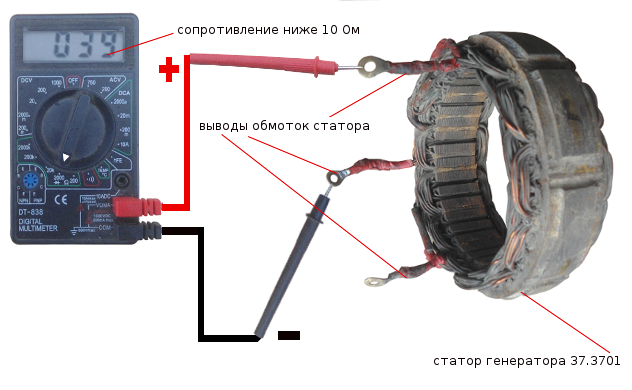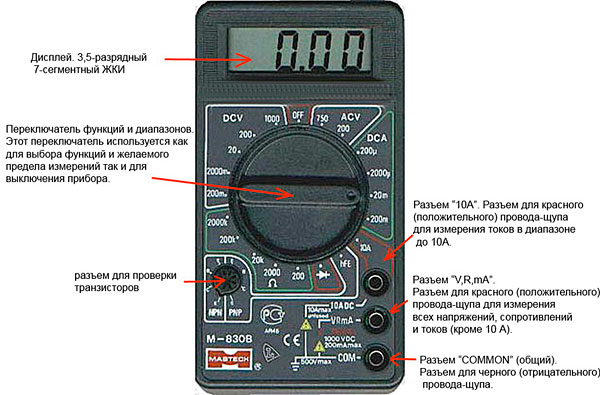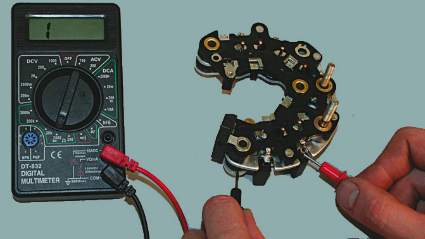The operation of a car sometimes brings various surprises to owners, including unpleasant ones. Devices can fail, the performance of which we do not even think about. And having bought an expensive foreign car, we do not get rid of problems at all. The generating device often falls into the risk zone. Knowing how to check the operation of the generator on your own, you can prevent major repairs.
About the generator and problems
The generator is one of the most complex and sensitive units in terms of repair on a car. For this reason, it is necessary to be able to identify device malfunctions in a timely manner in order to prevent its failure.
First of all, the generating device performs the function of voltage recovery. This allows the battery to transfer care of the car's electrical system to it, and not sit down in 1-2 hours.
Attention. Proper operation of the battery a priori implies a tandem with a generator. If the latter functions clearly and without problems, then the battery will last 5-6 years, no less. The owner will only need to recharge the battery a few times, and that's it.
A gene or GU can fail for a number of reasons. Having a simple structure, because it is, in fact, an electric motor with greater voltage generation, for a person ignorant of technology, the unit can be difficult to set up.
One of the most common GU failures is, of course, related to bearings. They provide the rotor of the device with trouble-free rotation. When they fail, they jam, and the stem stops rotating. The consequences are as follows: the belt breaks or worse.

The second most common problem with GU is the combustion of the winding on the inductor or stator. This happens from moisture that gets inside and corrodes everything. As you know, copper wiring is used inside, which is too sensitive to moisture.
The third most common reason is the failure of the brushes. The problem occurs quite often among owners who actively operate the car (frequent long-distance trips, etc.). The brushes wear out corny from long walking along the paths.
The tablet relay fails too often. It performs an overcharge protection function in the generator. If the relay fails, then the GU starts automatically recharging the battery, wasting excess energy, which ultimately leads to rapid damage to the gene.
Simple diagnostic methods
There are a number of different methods that help identify specific malfunctions of the generating device. Let's start with the simplest ones.
On foreign cars, as a rule, an on-board computer is installed. It monitors the entire automotive system, allows you to identify weak components and mechanisms. If such a BC is present in the car, then generator problems can be seen in messages that appear on the screen for several seconds.

The error code is sent to a car service or driven into a special line on the websites of certain car models in order to find out the specific cause of the malfunction. Everything is simple.
In some cases, the BC simply displays a message: visit the diagnostic center. Naturally, here you should not pull and go immediately.
If there is no BC, then it will be replaced by a control light on the dashboard. The indicator with the battery icon is lit only when the battery is the sole source of power. As soon as we start the engine, the light goes out, which indicates the transfer of the function of providing power to the auto electrical network to the generator. The icon continues to flash, which means that something is not right with the generator.
Here are a lot of other symptoms that indicate problems with the generator:
- The GU makes noise with the parallel use of optics, air conditioning and other electrical consumers;
- The battery is constantly discharging, although checking its condition gives a positive result;
- When "gasping", when the front optics are on, a strong noise is heard;
- The smell of burning in the cabin often indicates a breakdown of the generator;
- After a long trip, mostly in the evening, the body of the generating device becomes very hot to the touch;
- At XX, the unit emits extraneous noise and hum;
- During operation, sparks fly out of the generator and other lighting effects are noticeable.
The methods described above for testing a gene are superficial. They will not give accurate readings, but they are quite enough to visit the maintenance service and find out the specific reason.
Video on how to check the battery and generator
Verification by meters
As mentioned above, either a multimeter or a voltmeter is used to check the generating device or GU.
Tablet
To test the regulator (tablet), you will need to arm yourself with a voltmeter showing values \u200b\u200bof 0-15 V.

Here's how it's done:
- The internal combustion engine warms up in advance at medium speeds and with the optics turned on (about 20 minutes);
- The current is measured between the terminals of the mass of the GU and the output "30".
Attention. The normal current value should be approximately 14 V (for the "eight"). You can see the recommended values for each specific car in the technical documentation.
Checking the regulated voltage is carried out as follows:
- The device is connected to the battery terminals;
- The engine starts and runs normally;
- The indicator is removed (it must be the same as the factory data).
Diode bridge
To test a WB or diode bridge:
- The voltmeter is put into the DC current measurement mode;
- The probes are connected to the case and the output "30";
- The tension is relieved.
Attention. The meter reading must be equal to half a watt. Otherwise, most likely, the diodes failed.
Ground test:
- To check for a breakdown, the battery must be disconnected without fail;
- Then throw off the wire from the generating device, which goes to the output "30";
- The voltmeter is connected between terminal "30" and the removed PG wire.
Attention. We look at the readings: if the voltage is above 0.5 mA, there is a breakdown in the bridge or the insulation of the WB.
Recoil voltage test:
- A special clamp is taken (it comes as an additive to the measuring device);
- To cordon them the wire going to the conclusion "30";
- Start the engine and leave it to run at high speeds;
- Remove voltage from each connected consumer of the car's electrical network and record the sum of all data;
- At the same time turn on all consumers, remove the voltage.

The result in both cases should not differ. Some discrepancies are allowed, but not more than 5A down.
The multimeter during testing of the diode bridge can also be set to the beep mode. Voltage measurement is carried out, as in the case described above, for each element separately. The sound should only go in one direction. If a sound is heard during reverse measurement or direct measurement, the diode is defective.
VO check
Excitation test:
- The motor starts;
- High speeds are set;
- The measuring probe (clamp) clings to the wire that is connected to terminal "67".
Tester readings should correspond to 3-7A. Thus, only the voltage sufficient for excitation can be tested.
As for testing the VO (windings):
- The brush holder and tablet are removed;
- Contacts are cleaned;
- The winding is visually checked for breaks and short circuits;
- The probes of the measuring device are connected to the contacts, the voltage is removed.
Attention. The current at the outputs should not be higher or lower than 5-10 ohms.
Testing with an ohmmeter is also carried out as follows: one probe for the contact, the other for the stator. In this case, the device should show infinity. If not, the VO closes to ground.
stator
Checked as follows:
- The probes of the device are connected to the output of the winding and the housing;
- Testimony is being taken.
If the current readings do not reach 50 kilo-ohms, then this is evidence of a stator breakdown. You can also determine the breakdown of an element visually. It is enough to pay attention to burnouts and other noticeable defects.
More details on how to check the gene in the video
When checking a working generator, one must be careful and attentive. Sleeves and other parts of clothing should not hang loosely, as they can easily get caught in the pulley and cause serious injury.

- It is impossible to diagnose the unit using the short circuit method - in other words, to a spark;
- It is forbidden to connect output "30" with the car body;
- The generator should be diagnosed using measuring instruments - a voltmeter or an ammeter;
- If the wiring that provides the generator with current changes, then you need to select cables of a regular (similar) section and size;
- Before testing the generating device, it is recommended to make sure that all connections are working, especially paying attention to the belt tension.
Attention. A correctly tensioned belt will bend no more than 10 mm if a force of 10 kgf is applied to it.
Video about checking the generator with a multimeter
You can check the health of the GU in different ways. The main thing is to do it periodically to prevent the complete failure of the device and prevent the malfunction from moving to other, more important elements of the car.







